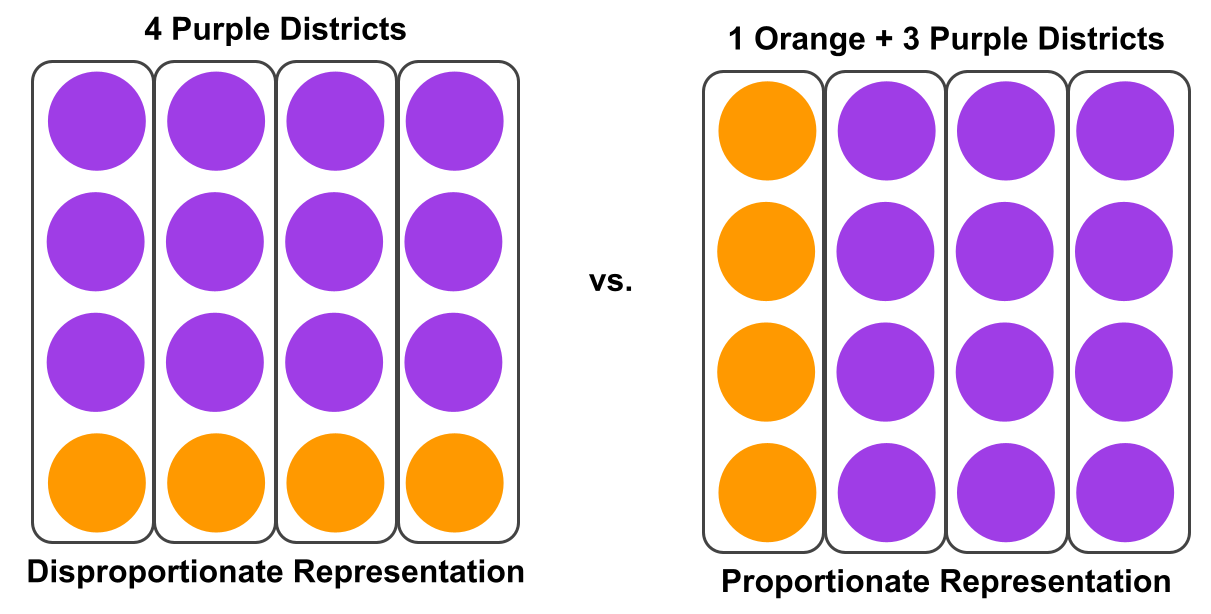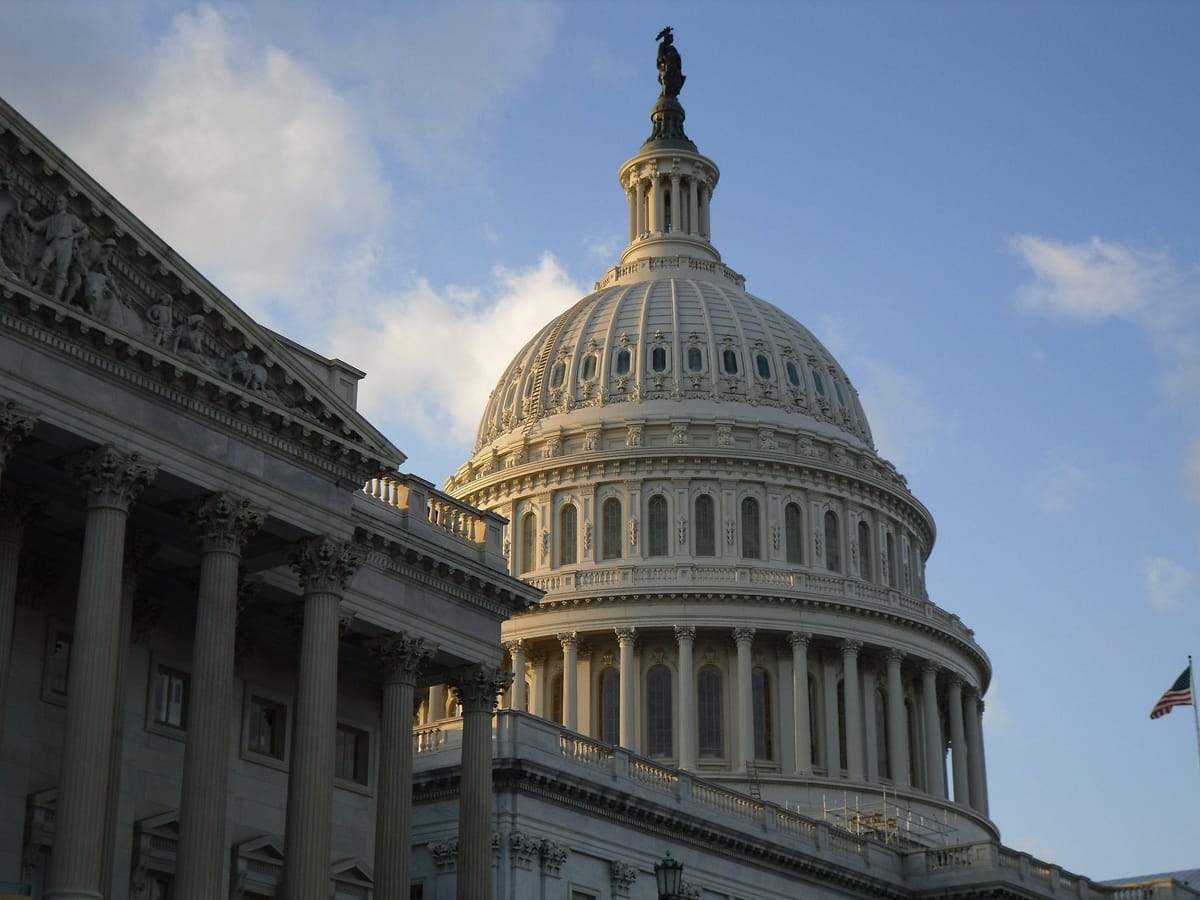The House of Representatives is somewhat of an ironic name. It’s a cheap name for an institution that has been failing to do so.
The House is designed to give regular people from the American public power in the federal government through their representatives. Numerous things, like lobbying, Super PACs, incumbency advantage, two-party system, or even the Permanent Apportionment Act of 1929, can cause blemishes on representation and fairness inside our legislative branch, but there is one that is frequently ignored and does not even register with many: Single-Winner Congressional Districts and the issues surrounding them. These congressional districts and their use as a medium for selecting representatives harms the democraticness of the most major law making body in the United States.
According to Fix Our House, a nonpartisan organization dedicated to electoral reform, only 10% of elections in the 2022 midterms were competitive. This illustrates the tough challenge of creating competitive districts that deal with the issue of differing ideologies in cities and rural environments with single-winners. This also does not factor the easy and sometimes common gerrymandering that can happen with biased district drawers. The factors surrounding single-winner districts result in many safe districts.
Safe districts or safe seats are congressional districts where a certain political party has a significant advantage due to the ideological makeup of the district’s region. With little ideological competition, these safe congressional districts can create two immediate problems.
First, it places increased importance on extremely low-turnout primary elections. In safe districts, primary elections for the dominant party will have the role of selecting the district’s representative instead of general elections. Primary elections can possibly attract more radical and dedicated voters. While not all or possible many primary voters are radical, this may result in selecting candidates for general elections that are also more radical and extreme, which will usually be the eventual representative of a safe district. These possible eventual unrepresentative and radical representatives from these low-turnout primaries can be one factor leading to a more polarized, partisan, and deadlocked Congress, which can be seen today.
The second issue that single-winner districts can create is disproportionate representation. Since one district does not consider representation in other districts, representatives elected to the house can disproportionately represent the areas and states they come from.
To illustrate, hypothetically, let's say there are 4 safe districts and each district is drawn (intentionally or not) with an usual ideological representation of 75% purple party and 25% orange party. All 4 districts would result in a representative seat for the purple party, but, if representation was accurately shown, the orange party would deserve 1 of the 4 seats.

Some of the best examples of which are Democrat-dominated Massachusetts and Republican-dominated Arkansas, as shown by Protect Democracy. Despite attempts to draw districts to help with unfair representation, all 9 of Massachusetts’ House representatives' seats are occupied with Democrats, even though roughly ⅓ of people voted for Republican Donald Trump in the presidential elections of 2016 and 2020. For Arkansas, all 4 of their representative seats are occupied by Republicans, despite Democrats having just over ⅓ of support, as shown by presidential elections in 2016 and 2020.
It is clear that Single-Winner Congressional districts are failing to create a representative House. There are a couple of proven alternatives that can help deliver and structure a more representative House of Representatives.
One proven alternative is ranked-choice voting. You may have heard this many times or not at all, but, to simplify, ranked choice voting is a system where voters rank candidates on preference. Once the ballots are collected, candidates will be given votes based on voters' highest ranked preference. If no candidate receives 50% of votes, the least popular candidate is eliminated, and the ballots that have an eliminated candidate as their top preference will move on to their next preference. Rounds will continue until one of the remaining candidates reaches more than 50% of the vote, while voters’ ballots will reallocate their votes to candidates based on availability.
Ranked-choice voting allows candidates to be chosen that more voting constituents are happy with. This voting method has been seen in limited uses around the country and more commonly in other countries.
Another alternative could be a model based on Sweden's voting method for their parliament, the Riksdag. Sweden achieves proportional representation by utilizing multi-member districts, party lists, and allocating seats based on the percentage of votes each party receives. Party lists contain each party and their candidates in a provisional ordered list of selection. Voters may select a party and a preferred candidate from the party. After voting, the seats in each district are assigned proportionately to each party, as long as they have at least 4% of the vote. The party seats are first filled by the candidates with 5% of the preferred candidate vote, then by the party’s ordered list.
Ranked-choice voting and systems similar to Sweden’s can also allow third parties to thrive in the United States. Instead of being a wasted vote in our current system, these alternatives can give people a credible reason to vote for third-party candidates.
As we barrel deeper into the election season, our structures around selecting our representatives will have a significant effect on the makeup of the House of Representatives.
While not much can be done right now to solve the issues of inaccurate representation our current system provides, just voting can help limit some of the problems occurring. Even though many primaries have occurred, if your primaries have not happened yet, please vote and have a say. As shown in the 2022 midterms, only around 20% of people voted in primaries. And when general elections come around, still vote, even though many of you will have limited impact in selecting a candidate.
The House of Representatives is one of the most powerful structures in the United States. Do not let your democratic power go unused.


Comments ()